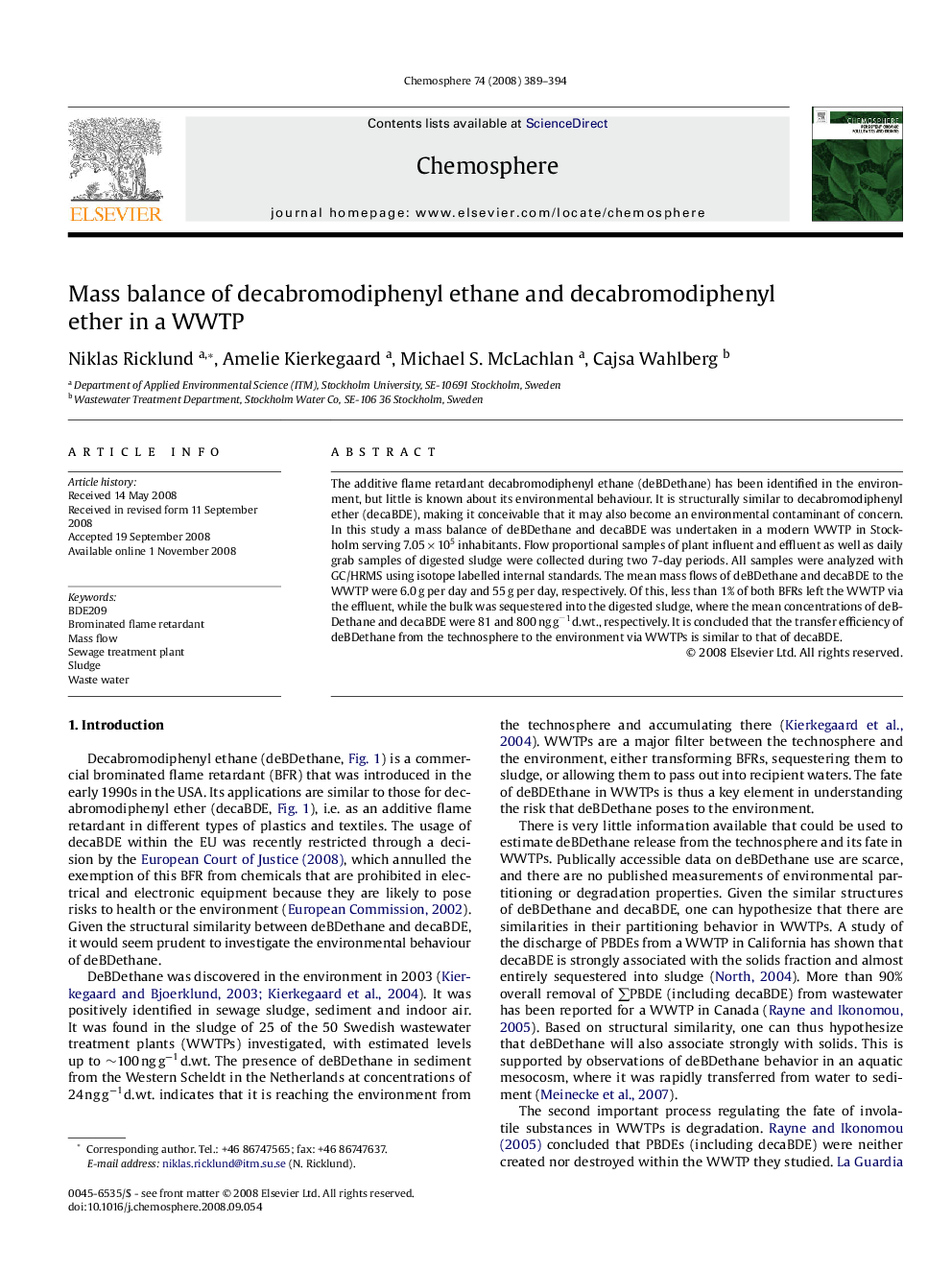| Article ID | Journal | Published Year | Pages | File Type |
|---|---|---|---|---|
| 4413652 | Chemosphere | 2009 | 6 Pages |
The additive flame retardant decabromodiphenyl ethane (deBDethane) has been identified in the environment, but little is known about its environmental behaviour. It is structurally similar to decabromodiphenyl ether (decaBDE), making it conceivable that it may also become an environmental contaminant of concern. In this study a mass balance of deBDethane and decaBDE was undertaken in a modern WWTP in Stockholm serving 7.05 × 105 inhabitants. Flow proportional samples of plant influent and effluent as well as daily grab samples of digested sludge were collected during two 7-day periods. All samples were analyzed with GC/HRMS using isotope labelled internal standards. The mean mass flows of deBDethane and decaBDE to the WWTP were 6.0 g per day and 55 g per day, respectively. Of this, less than 1% of both BFRs left the WWTP via the effluent, while the bulk was sequestered into the digested sludge, where the mean concentrations of deBDethane and decaBDE were 81 and 800 ng g−1 d.wt., respectively. It is concluded that the transfer efficiency of deBDethane from the technosphere to the environment via WWTPs is similar to that of decaBDE.
